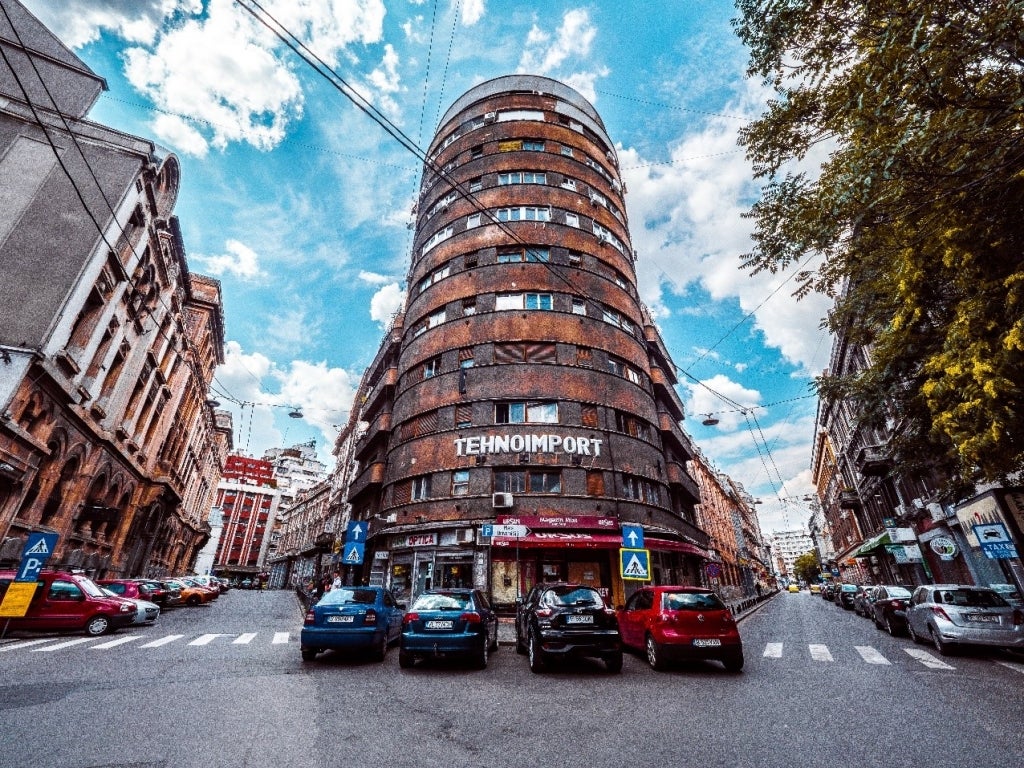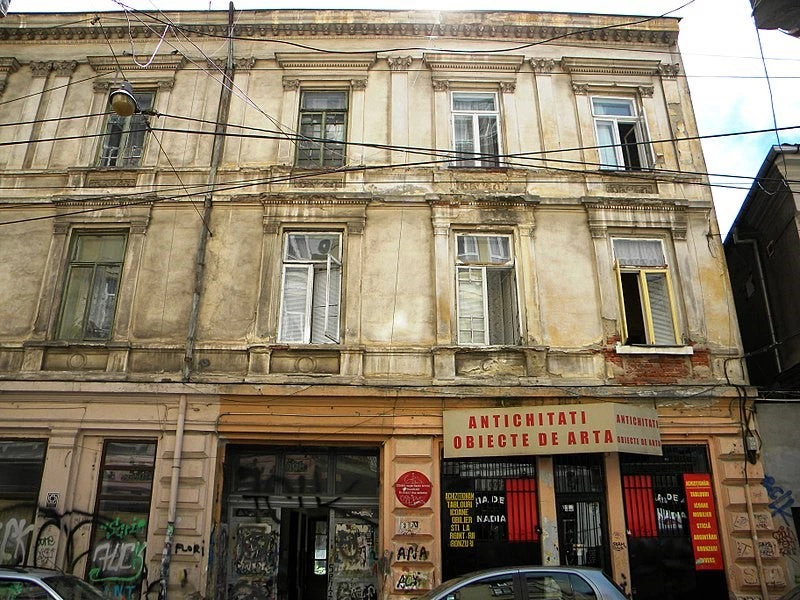Opened State Archives reveal how decisions taken by the government in 1977 have created a legacy of weakened buildings in Bucharest, exacerbating its high earthquake risk. Fortunately, Romanians are working hard to raise awareness, strengthen buildings, and expand resilience to create thriving and safer communities.

Bucharest is a beautiful, dynamic city, full of contrasts – churches, cultural heritage sites and other buildings from early last century sit alongside monolithic post-war complexes designed to quickly house its growing population. However, walking through the city center, you might notice buildings with decaying facades and balconies, or the hanging “red dots” scattered on buildings throughout the city. If you talk to a local, you will quickly learn that these buildings have been assessed as especially risky should an earthquake occur, and that the next earthquake could strike any day now.
But many of Bucharest’s pre-1977 buildings may be more seismically vulnerable to earthquake shaking than we know, due in large part to decisions taken in the aftermath of a devastating earthquake that seriously damaged the city on March 4th in 1977. The opening of State Archives in 1989, along with careful research by a team of experts has revealed a disturbing legacy of hidden risk that still threatens Bucharest’s residents today.
The 1977 earthquake caused 1,578 fatalities (90% of them in Bucharest) and more than 11,300 injuries, hospitalizing nearly 2,400 and left more than 35,000 families homeless across much of Eastern Romania. It also damaged or destroyed 742,200 housing units (apartments and single-family houses), with more than 700,000 housing units requiring repair or strengthening. A 1978 World Bank report concluded that damage costs and production losses reached US$2.05 billion (equivalent to close to US$8 billion today or more than 6% of Romania’s official exchange rate GDP at that time).
In the weeks following the earthquake, national and international engineers assessed the damage to buildings and infrastructure. However, despite expert advice recommending robust damage-safety assessments for all affected buildings, a government order was given that all repairs should be completed by May 1st – a mere seven weeks after the earthquake. When national experts expressed disagreement, they were subjected to secret police surveillance.
On July 4th, 1977, a government meeting was held to discuss reconstruction progress: by this point 14,063 buildings had been assessed as needing repair, with only 4,510 buildings repaired to date. At this meeting, President Nicolae Ceauşescu expressed dissatisfaction that the decisions for repairs “had been left to professors and engineers,” and stated that “the engineering assessment commissions and strengthening work had produced more damage than the earthquake.”
Despite the concerns raised by engineers, the government ordered that no more buildings were to be demolished or columns repaired (or strengthened) without special approval. And so, four months after the earthquake, all strengthening and repair efforts were abruptly ended. Today, if you walk around Bucharest with local engineers, you can still see some buildings in Bucharest that were only partially repaired, with many buildings receiving only cosmetic fixes, such as epoxy resin injections in visible cracks.

By December 1977, the earthquake event was considered consigned to history. A US State Department cable noted, “[The] President's tone implied [the] entire earthquake episode is now history and is no longer a consideration in Romanian forward planning.”
The rushed repairs have left a legacy of hidden risk in the city of Bucharest. While modern engineering models can estimate the performance of buildings under various earthquake scenarios by taking into consideration the age of the building, number of floors, structural system, construction materials, building dimensions and maintenance level, they can’t verify the level of damage that remains from the 1977 earthquake. So, while we have some idea of the damage that a future large earthquake could inflict on Bucharest and the surrounding area, this historical research suggests the potential impact may be significantly underestimated.

Fortunately, Romanian decision-makers and civil society groups are committed to raising awareness and building consensus for action. The Department of Emergency Situations (DES) and the General Inspectorate for Emergency Situations (GIES) are making significant progress in enhancing response capabilities and risk communication to support and empower local communities, including large-scale earthquake simulation drills. The DES and Code for Romania, with support from the World Bank, recently launched a new app which will enable the government to better channel resources and coordinate volunteers in the event of a major earthquake or other disaster. The World Bank is also supporting the Romanian government to modernize and strengthen critical emergency response infrastructure across Romania, directly benefiting more than 3,000 first responders as well as the local communities that they serve. Ongoing collaboration with the Ministry of Public Works, Development and Administration is also aiming towards the development of a new national earthquake strategy and investment plan. And, at the municipal level, the World Bank has also started to provide advisory services to the City of Bucharest to support enhanced seismic resilience.
We know that, one day, an earthquake will strike Bucharest again. In the meantime, national and city authorities, civil society organizations, and the World Bank are working together to harness new tools, expand innovative approaches, and develop forward-looking policies and measures to undo some of the mistakes from the past, and ensure that Romania is better equipped to face tomorrow’s hazards.
Related links:
- Subscribe to our Sustainable Cities newsletter
- Follow @WBG_Cities on Twitter





Join the Conversation